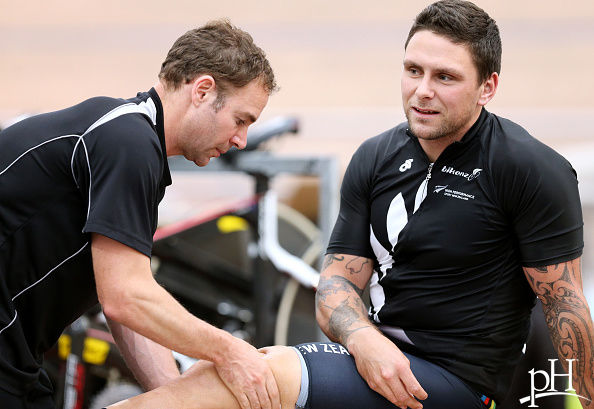Is Massage Therapy the Missing Link in Pain Management?
9 years ago | Prescription Drugs
By Joy Stephenson-Laws, JD, Founder
As unpleasant as it is, pain is good because it protects us. The human brain has neurons or nerve cells, which “carry messages” that tell us if something is painful or pleasurable. If you couldn’t feel the sensation of being burned, this could be deadly so pain is actually a lifesaver.
Regardless, we obviously do not enjoy pain, and when we have it we want to get rid of it as soon as possible. This is usually doable with a minor injury or common headache, but for people who deal with chronic pain from issues such as migraines and kidney stones the pain can be unbearable and difficult to alleviate. This kind of pain may affect quality of life and may even lead to anxiety disorders or depression.
“Depression is the most common emotion associated with chronic pain. It is thought to be three to four times more common in people with chronic pain than in the general population. In addition, 30% to 80% of people with chronic pain will have some type of depression,” reports the American Chiropractic Association.
A report from Oxford Academic says, “pain generally receives little attention in medical training programs.” When over the counter painkillers such as acetaminophen and ibuprofen don’t get the job done, your doctor might prescribe opioids after you have a major surgical procedure or if you suffer from chronic pain. The illegal drug heroin is also considered an opioid, and some people utilize this drug for pain management.
The Centers for Disease Control and Prevention (CDC) reports opioids, including prescription opioids and heroin, killed more than 33,000 people in 2015 (more than any year on record). The CDC also reports nearly half of all opioid overdose deaths involve a prescription opioid.
And opioid addiction can happen to anyone, even people with no prior alcohol or substance abuse. Read, for example, this story about a 14-year-old who got addicted to painkillers after being prescribed them to cope with pain from a kidney stone.
How do we fix this issue?
Opioids should not necessarily be eliminated as a pain reliever, but we need to attack pain with a multi-pronged spear, and one of these prongs should perhaps include massage therapy.
We have discussed massage therapy and how it can help with several issues including pain, but let’s take a closer look and explore whether in some cases it can be an alternative or supplement to opioids.
Remember those neurons/nerve cells I mentioned we all have? Well, the report from Oxford says many studies have proven massage therapy can have a direct effect on those message carriers in your brain. According to the report, there are studies which show “the psychological effects of massage in producing a relaxation response and functional magnetic resonance imaging studies have suggested massage influencing regions of the brain responsible for stress and emotion regulation.”
One of the doctors mentioned in the study has also done extensive work on the source of muscle pain by defining specific muscle trigger points. “It is plausible that effects of massage interrelate with these muscle pain generators in an inhibitory fashion,” the study says.
Some reports also say massage reduces inflammation, which is a major cause of pain in general.
Massage therapy may be effective because, as the study demonstrates, this type of treatment impacts both the brain and the source of the actual physical pain. The important part to remember is massage therapy is not in every case an alternative to prescription opioids, but it may be a great addition that may reduce the amount and duration of taking painkillers such as opioids.
How else can we be proactive about pain management?
- Nutrition. The mineral magnesium is great for pain control. It is a great compliment to painkillers and other forms of pain management. For a list of foods rich in magnesium, click here.
- Meditation. Meditation requires you to be mindful, and imaging studies have shown practicing mindfulness can have similar effects as massage therapy does on those neurons in the brain. According to a report from Psychology Today, “[m]indfulness meditation has been shown in clinical trials to reduce chronic pain by 57 percent. Accomplished meditators can reduce it by over 90 percent.” That’s a heck of a natural painkiller!
- Counseling. The mind and body are connected as you can see, and in order for you to live as your healthiest self and feel your best you have to take care of both. A study conducted by the National Institutes of Health (NIH) showed physical therapy and counseling combined helped alleviate pain in patients who suffered from myofascial pain syndrome, a chronic pain disorder that puts pressure on sensitive points in the muscles.
Part of being proactive about your health is knowing your options and making an informed decision with your doctor. Do not be a ‘backseat patient.’ Your questions and concerns are always valid and will likely be welcomed by your doctor. We have to treat pain and disease as something that can be fought with multiple strategies. When it comes to weight, you use diet, exercise and different kinds of exercise like resistance training or cardio. You may even hire a personal trainer. So why take a one pill approach when it comes to pain?
Enjoy Your Healthy Life!
The pH professional health care team includes recognized experts from a variety of health care and related disciplines, including physicians, health care attorneys, nutritionists, nurses and certified fitness instructors. To learn more about the pH Health Care Team, click here.







